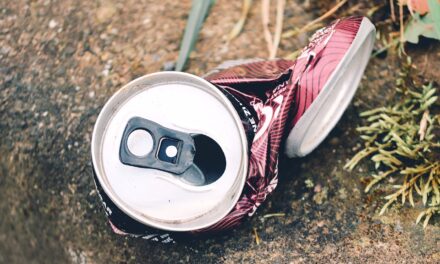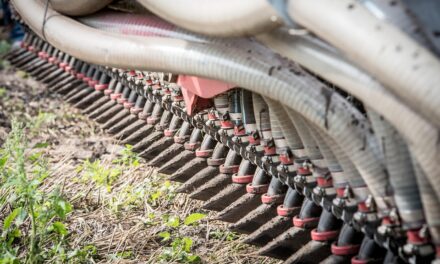Water cycle management best practices explained
Public Policy and Advocacy, Water cycle management best practices, and more…
The Great Salt Lake: A Shrinking Lifeline, A Growing Crisis
The Great Salt Lake, a vital ecosystem for Utah, is shrinking at an alarming rate. This isn’t just a regional problem; the consequences of its decline ripple far and wide, impacting our health, our economy, and our very air.
Imagine a vast, salty wasteland where a vibrant lake once thrived. This is the grim reality facing the Great Salt Lake due to a severe water shortage, driven by a perfect storm of climate change and human consumption.
Climate change is accelerating the evaporation of water from the lake, while warmer temperatures are reducing snowpack in the mountains, the lake’s primary source of water. This vicious cycle is further exacerbated by our insatiable thirst. As our population grows, so does our demand for water, leaving less for the lake to sustain itself.
The consequences are dire. The shrinking lakebed is exposed, creating a breeding ground for dust storms that can carry harmful pollutants, threatening our health and the environment. Wildlife habitats are destroyed, throwing ecosystems out of balance.
The Great Salt Lake is a critical lifeline for Utah. Its economic impact is immense, supporting industries like tourism, recreation, and agriculture. Its shrinking size threatens not just the environment, but also our livelihoods.
We must act now. By conserving water, investing in sustainable practices, and tackling climate change, we can prevent the Great Salt Lake from vanishing. The future of this iconic landmark, and the well-being of Utah, hangs in the balance.
The Great Salt Lake: A Lifeline in Danger
TL;DR The Great Salt Lake is facing a serious water shortage, driven by climate change and our use of water. We need to work together to save the lake by using water wisely, finding new ways to farm, and making smart choices about how we use water.
The Water Cycle of the Great Salt Lake
The Great Salt Lake, located in Utah, is a vital part of the state’s ecosystem. It’s like a giant bathtub, collecting water from all around. Imagine a huge, thirsty sponge soaking up water from the mountains, rivers, and even the air. This is how the water cycle works in the Great Salt Lake region:
- Snowmelt: Snow falls on the mountains during winter, and when temperatures rise in spring, the snow melts and flows down into streams and rivers.
- Rivers and Streams: The melted snow flows through rivers and streams, carrying water from the mountains to the Great Salt Lake.
- Evaporation: The sun heats the water in the lake, causing some of it to evaporate and rise into the air.
- Precipitation: The water vapor in the air eventually condenses and falls back to the ground as rain or snow, starting the cycle all over again.
A Thirsty Region: How Cache County is Connected
The Great Salt Lake gets water from many places, including the Cache County area in northern Utah. Farmers in Cache County use water from rivers and streams to grow crops. This water eventually flows into the Great Salt Lake.
The Water Shortage Crisis: A Balancing Act
The Great Salt Lake is facing a serious water shortage because:
- Climate Change: Warmer temperatures mean more water evaporates from the lake, and less snow falls in the mountains. This means less water is flowing into the lake.
- Increased Water Use: As the population grows, we use more water for drinking, farming, and other activities, leaving less water for the Great Salt Lake.
The Impact of Water Scarcity: A Ripple Effect
When the Great Salt Lake shrinks, it has a big impact on the environment:
- Dust Storms: As the lake shrinks, the dry lakebed is exposed to the wind. This can lead to dust storms that can harm people’s health and make the air quality bad.
- Wildlife Loss: Many birds and animals depend on the Great Salt Lake for food and a place to live. When the lake shrinks, these animals have fewer places to go, and their populations can decline.
Solutions: Working Together to Save the Lake
We need to find ways to conserve water and make sure there’s enough for everyone:
- Water Conservation: We can all do our part by using water wisely. This means taking shorter showers, fixing leaky faucets, and watering our lawns less often.
- Innovative Irrigation Techniques: Farmers can use new ways to water their crops that use less water, like drip irrigation.
- Public Policy and Advocacy: Our leaders can make policies that encourage water conservation and protect the Great Salt Lake.
The Active Climate Rescue Initiative: Leading the Way
The Active Climate Rescue Initiative is an organization working hard to address the water shortage in the Great Basin. Their work includes:
- Raising Awareness: They educate the public about the importance of water conservation and the impact of climate change on water resources.
- Supporting Innovative Solutions: They help develop and implement new technologies and methods for water conservation and management.
A Hopeful Future:
By working together, we can save the Great Salt Lake and ensure its future. By conserving water, supporting innovative solutions, and advocating for change, we can keep the Great Salt Lake healthy for future generations.
More on Water cycle management best practices…
- ## SEO Keywords: Water Cycle Management Best Practices
- General
- Water cycle management best practices
- Sustainable water management
- Water conservation strategies
- Water resource management
- Water cycle sustainability
- Water cycle optimization
- Water cycle efficiency
- Integrated water resource management
- Water cycle resilience
- Water cycle adaptation
- Specific Areas
- Water harvesting best practices
- Rainwater harvesting techniques
- Water reuse and recycling
- Water treatment technologies
- Water infrastructure improvements
- Groundwater management
- Surface water management
- Drought management
- Flood control
- Water pollution prevention
- Implementation
- Water cycle management plans
- Water cycle monitoring and evaluation
- Water cycle data collection and analysis
- Water cycle modeling and simulation
- Water cycle education and outreach
- Industries
- Water cycle management in agriculture
- Water cycle management in urban areas
- Water cycle management in industry
- Water cycle management in tourism
- Tools and Technologies
- Water cycle management software
- Water cycle management apps
- Water cycle management sensors
- ## SEO Keywords: Public Policy and Advocacy
- General
- Water policy advocacy
- Water policy reform
- Water policy analysis
- Public policy and water management
- Advocacy for sustainable water use
- Water access and equity
- Water rights and governance
- Water governance reforms
- Water policy stakeholders
- Specific Issues
- Water scarcity and drought
- Water pollution and sanitation
- Water infrastructure investment
- Climate change adaptation for water
- Water security and conflict
- Water and economic development
- Organizations and Initiatives
- Water policy think tanks
- Water advocacy organizations
- International water conventions
- Water policy research institutions
- Water policy coalitions
- Specific Regions and Countries
- [Region/Country] Water policy
- [Region/Country] Water management best practices
- [Region/Country] Water security challenges
- Advocacy Tools and Techniques
- Public awareness campaigns
- Policy lobbying
- Citizen engagement
- Legal advocacy
- Community mobilization
- Public Policy Frameworks
- Water policy frameworks
- Water governance frameworks
- International water agreements
- National water policies
- Regional water plans
- Keywords related to specific water policy issues:
- Wastewater treatment
- Groundwater recharge
- Water pricing policies
- Water conservation regulations
- Water quality standards
- Water infrastructure funding
- Water rights allocation
- Water access for marginalized communities
- Water security in conflict zones
- Water diplomacy











